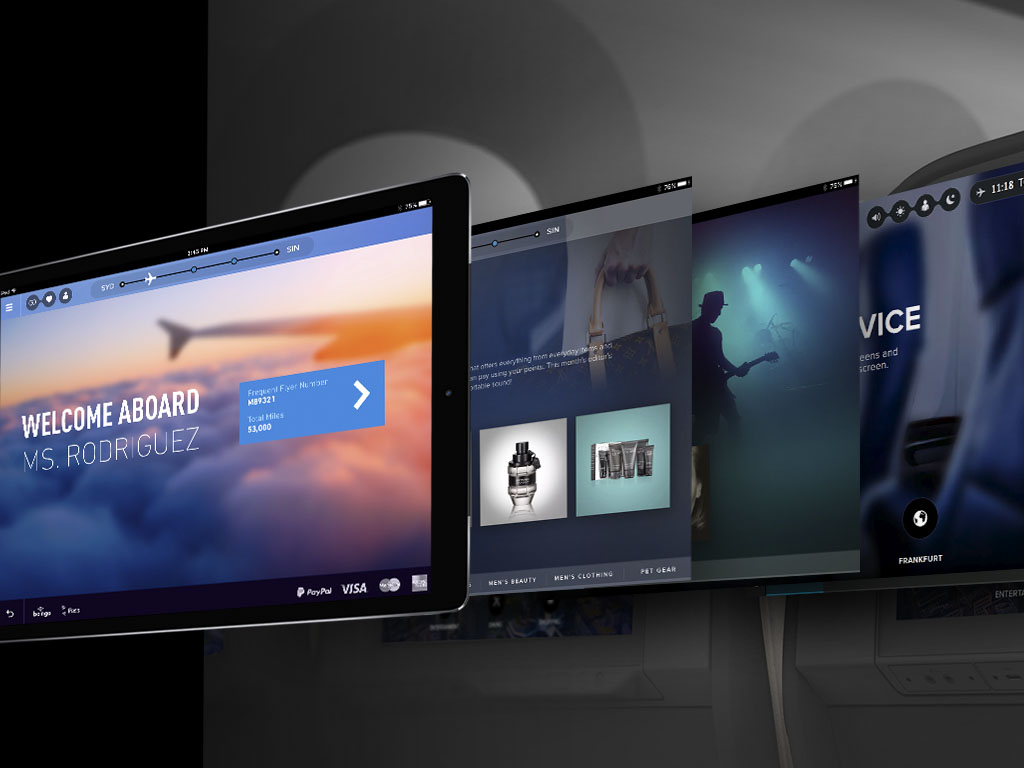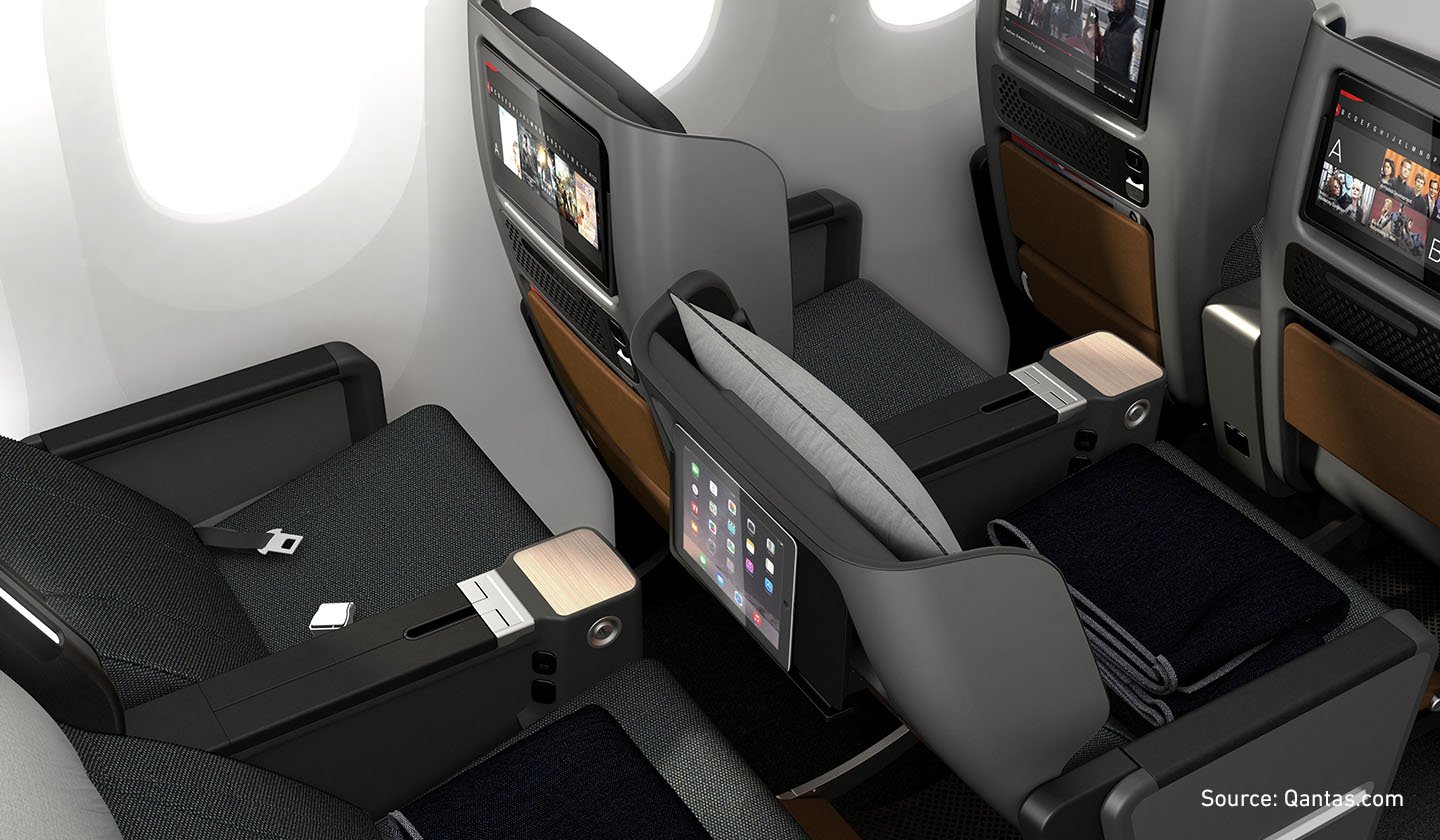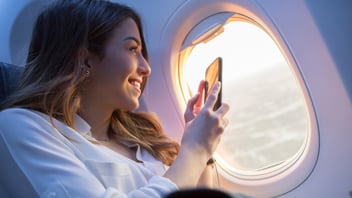As home viewing habits evolve, delivering something special to passengers in the air gets more challenging for airlines. Streaming services like Amazon Prime, Hulu and Netflix have dramatically changed the way consumers enjoy entertainment at home and while traveling.
With Netflix now allowing consumers to download entertainment to their devices to watch when they are not connected to Wi-Fi, travelers have even more entertainment options they can bring with them to the aircraft cabin.
This has led some to suggest that perhaps BYOD (bring your own device) entertainment will finally replace embedded seat-back systems. But if we’ve learned anything about passengers over the years, it’s that they notice — and are usually bothered by — anything they perceive as a reduction in product or service standards.
Embedded inflight entertainment (IFE) is a visible, tangible experience — a perk of the ticket which passengers can reach out and touch. Even as we’ve become a more mobile society, passengers still expect to be greeted by a seat-back screen when they sit down. A modern screen on the seat-back of an aircraft seat — with superior screen resolution, intuitive menus, power chargers, a broad entertainment catalog and passenger device pairing capabilities — immediately promises an open, welcoming space.
Meanwhile, wireless IFE (wIFE) is not visible to the human eye until a mobile device is connected to it. That intangibility makes it difficult for some passengers to affix a particular value to it, while others — particularly those accustomed to the multi-device, multi-screen experience at home — can see its value immediately.
So which does an airline choose?
“A real solution is to have both, so you have great inflight Wi-Fi where you can even stream content if you want to.”
-Raymond Kollau
Industry Analyst and Brand-Experience Specialist
IFE vs. wIFE – or both?
In the debate between embedded IFE versus wIFE, it should be considered that each can help enhance an airline’s product offering in a unique way, delivering value to customers.
In short, it shouldn’t be thought of as an either/or proposition.
Raymond Kollau, an industry analyst and brand-experience specialist of industry trends research agency Airlinetrends.com, suggests the greatest gains can come from a mixed installation according to fleet types, routes, budgets and brand strategy.
Kollau points out that some airlines have used wIFE as entertainment for their short-haul services, while others have used wIFE to supplement older IFE systems during aircraft cabin-upgrade programs.
“Qantas was the first one to equip its older aircraft with wireless IFE,” Kollau says. “Versus an overhead screen, it’s a very sensible solution. If you look at 767 or 757 fleets, many airlines offer wireless IFE, from Condor in the leisure-carriers market, to United and Delta. It makes sense to offer at least something […] if your older aircraft will be in service for a few years.”
Kollau suggests that wIFE can be a permanent part of an entertainment strategy for a short-haul/long-haul fleet mix, adding wireless IFE on aircraft where installing seat-back embedded IFE might be impractical or too costly.
IFE vendors like Panasonic see a diversification of product strategies at airlines but not an increase of sales for wIFE at the cost of IFE. “A real solution is to have both — so you have great inflight Wi-Fi where you can even stream content if you want to,” Kollau says. In practice, passengers could pair their devices to the IFE system, even streaming their own video content onto the seat-back screen.
Data from the OEMs shows a relatively stable share of IFE-equipped aircraft rolling out of production over the past few years (just under 100% for twin aisle and roughly 40-45% for single aisle), which suggests that wIFE eats into the share of aircraft going out of Airbus and Boeing without any IFE product installed.
In other cases, it supplements and bridges the gap of justifiable entertainment where embedded IFE might not make sense, or it extends the life and the relevance of an older airframe with a lower investment that extends aircraft service time by a few more years.

Framing the Value Proposition
Offering wIFE entertainment raises questions over how to serve those few passengers who don’t travel with their own devices.
Kollau suggests airlines can leave wIFE as a BYOD service and supply devices as a courtesy to those who did not bring their own device. Qantas, he points out, offered customers iPads for the streaming service free of charge, which enhanced brand perception and service standards. But, he adds, airlines could also rent the devices. “For leisure carriers or low-cost carriers, this might be an ideal solution. It can generate ancillary revenues,” Kollau says.
Brands, however, should keep in mind that modern IFE is an excellent way to show passengers they are getting more value for the price of their ticket, no matter what cabin class they fly. Emirates highlights this feature in its most recent advertisement with brand ambassador Jennifer Aniston.
Live television programming can also help augment the value of a dual IFE and wIFE system. Moving map on the setback, the NBA Final on your tablet, BBC News on your laptop, while you post a picture on Facebook from your phone – welcome to inflight-multi-tasking paradise.
Don’t Fear Offline Netflix
If airlines are concerned about what Netflix means for inflight entertainment, they shouldn’t be. If anything, the fact that Netflix has enough demand for entertainment to go offline confirms the growing consumer hunger for constant entertainment — a hunger IFE can help feed.
As Brian Richardson, American Airlines’ director of Inflight Entertainment and Connectivity, told the Airline Passenger Experience association (APEX) in late 2016: “This change is going to make binge-watching a bit easier for Netflix customers who can’t connect inflight. [But, there are limitations to offline viewing] because it still requires passengers to plan ahead and have enough storage space on their devices.”
Netflix’s new offline viewing functionality may be a game-changer, but it should not be perceived as a threat to IFE. The offline Netflix product still relies on limited downloads of select programming, whereas airlines can deliver exclusive early window content.
The limitations of device storage and available battery power will also make this option impractical for many flights, and passengers would still notice if the screen suddenly disappeared from the seat-back in front of them.
Hollywood Off-Limits
Another wrinkle in the IFE vs. wIFE debate is the availability of content. Whereas TV content is broadly accessible through the likes of Hulu, Netflix and wIFE, Hollywood keeps their premium newly released movies as far away from any streaming provider as possible. The potential loss of revenue of a title being leaked is too big for a studio to justify making blockbusters available to personal devices. Those titles are predominantly reserved for highly secured distribution channels like movie theaters – and with a very short delay, embedded IFE.
Nothing is Not an Option Anymore
Whether an airline chooses embedded IFE, wIFE or an enriched mix, we’ve entered an age in which sitting in a cabin looking out of the window or staring at the fabric pattern on the seat-back is simply not enough for the majority of travelers.
“There are so many solutions these days. The only thing you can’t do is to offer nothing,” says analyst Kollau. “In a media society, with the amount of content people consume, you have to have some sort of IFE.”
The strategic challenge for airlines to align their product decision with the evolving expectations of their diverse customer demographic has become more complex than it has ever been before.



